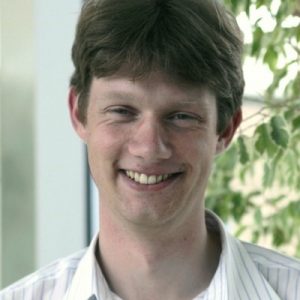
My research interests fall into three main areas:
1. Developing new experimental techniques and instrumentation for condensed matter research
Most recently, I have led development of an entirely new form of microscope, which images using neutral helium atoms [1, 4]. Our nascent technique of scanning helium microscopy (SHeM) has great promise for imaging delicate samples, which are damaged by conventional optical or electron microscopies. I currently hold a £1.3M EPSRC grant to develop the next generation of microscopes and to establish the field. We collaborate closely with Newcastle University, Australia, where a similar microscope has been built, based on our prototype instrument.
More generally, I focus on developing instrumentation based on helium beams, which has included the globally unique helium spin-echo (HeSE) method, capable of studying physics in the challenging picosecond-nanoscale regime, and ultra-sensitive helium detectors (mass-spectrometers) that are essential for both HeSE and high-resolution SHeM.
The Cavendish laboratory is uniquely positioned to be able us to develop new experimental techniques, and hence to explore these completely new areas of physics.
2. Picosecond dynamics of atoms and molecules on surfaces
Understanding the motion of individual atoms and molecules is incredibly important. With knowledge of how atoms move it is (for example) possible to improve how we design materials and processes from the ‘bottom up’, and to improve how we perform accurate numerical simulations that give clear predictions. To gain a full picture of the motion it is necessary to follow motion over a combination of picosecond timescales and nanometre length-scales – a very challenging combination.
The HeSE technique, which we developed, is the only way that it is possible to study the dynamics of atoms and molecules on surfaces in this otherwise inaccessible regime. There are a very wide range of applications, at both a fundamental and technological level. Publication [3] gives a recent example of a study relating to the self-assembly of molecules for organic-electronics applications.
Our facility is globally unique, and we are in the process of making it available to the wider scientific community.
3. Mechanical and constitutive properties of materials
I am interested in understanding the fundamental processes which control the constitutive properties and failure of materials. I currently have a particular focus on the effects of atomic defects in diamond, and the development of damage in polycrystalline diamond, which we probe using a variety of techniques, including solid particle erosion and micromechanical testing
